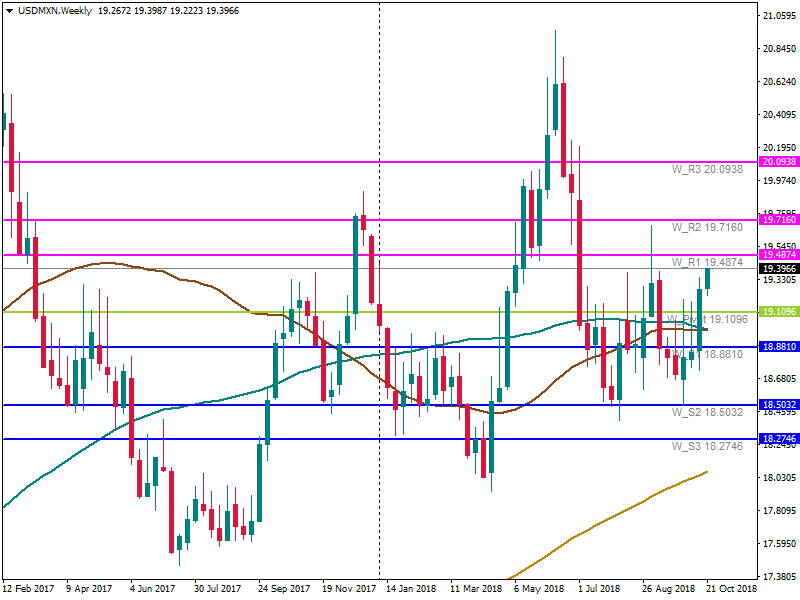The ups and downs of the Mexican peso
The new agreement between the United States, Mexico and Canada (USMCA) did not result in the long-term strengthening of the Mexican peso. The main reasons for it lie in both external and internal factors.
The key internal factor of the weak performance of the Mexican currency is connected with the future energy policy of the new president-elect Andres Manuel Lopez Obrador. The president was elected after all of the powerful political parties were rejected by voters. During his election campaign, he opposed the country's 2013 energy reform which made the fuel prices very high for the consumers. This reform ended a 75-year monopoly on oil and gas by state-owned Pemex and was aimed to increase the renewables in the power sector and the emissions of curb carbon. Despite the higher prices, Mr. Lopez Obrazor criticized the loss of the state influence over the explorative and extractive oil sectors. For now, investors are worried that Andres Manuel Lopez Obrador, also known as AMLO, will change the direction of the energy policy. AMLO and his administration is planning to give Pemex the main role in managing the Mexican upstream of oil and gas resources. However, this move brings a lot of uncertainties to investors. As the Pemex is considered one of the most indebted company by experts with 87% of its debt in the US dollars and other currencies, the company is more exposed to volatility in the exchange rate. In addition, the cash flows of the company will likely decline as the government intends to reduce fuel prices. The unclear future of the Mexican energy sector resulted in Fitch to revise Pemex's credit rating outlook to negative. As a result, the Mexican currency fell.
The other reason which affects the Mexican peso negatively is connected with the problem of Mexico City international airport. The construction was stopped due to the corruption allegations. Recently, the president-elect suggested providing a referendum on October 25-28 which would give a public opinion on whether or not to continue the project. However, if the referendum fails, it will hurt the investor confidence and result in the outflow of the capital from the country.
In addition, the external tensions keep pushing the MXN down. US president Donald Trump said he would close the southern border with Mexico due to the immigration issue.
How do these factors influence USD/MXN?
On a weekly chart, USD/MXN is trading at its September’s highs. If the MXN disappoints investors, the pair will have the power to cross the resistance at 19.4874 and stick above the next resistance at 19.7160. In case the MXN will be supported, the pair has a risk to fall below the support at 19.1096 to the next support at 18.8810.

Is there any hope for the MXN?
On October 4, the Central Bank of Mexico (Banxico) decided to keep its interest rate at 7.75%. However, the future rate hike can be expected very soon as a supportive step for the currency.
Besides that fact, the inauguration of the president-elect Andres Manuel Lopez Obrador is scheduled for December 1. His election made the Mexican peso to blow off. However, to satisfy investors and to support the currency in a long-term, he needs to keep things well balanced.